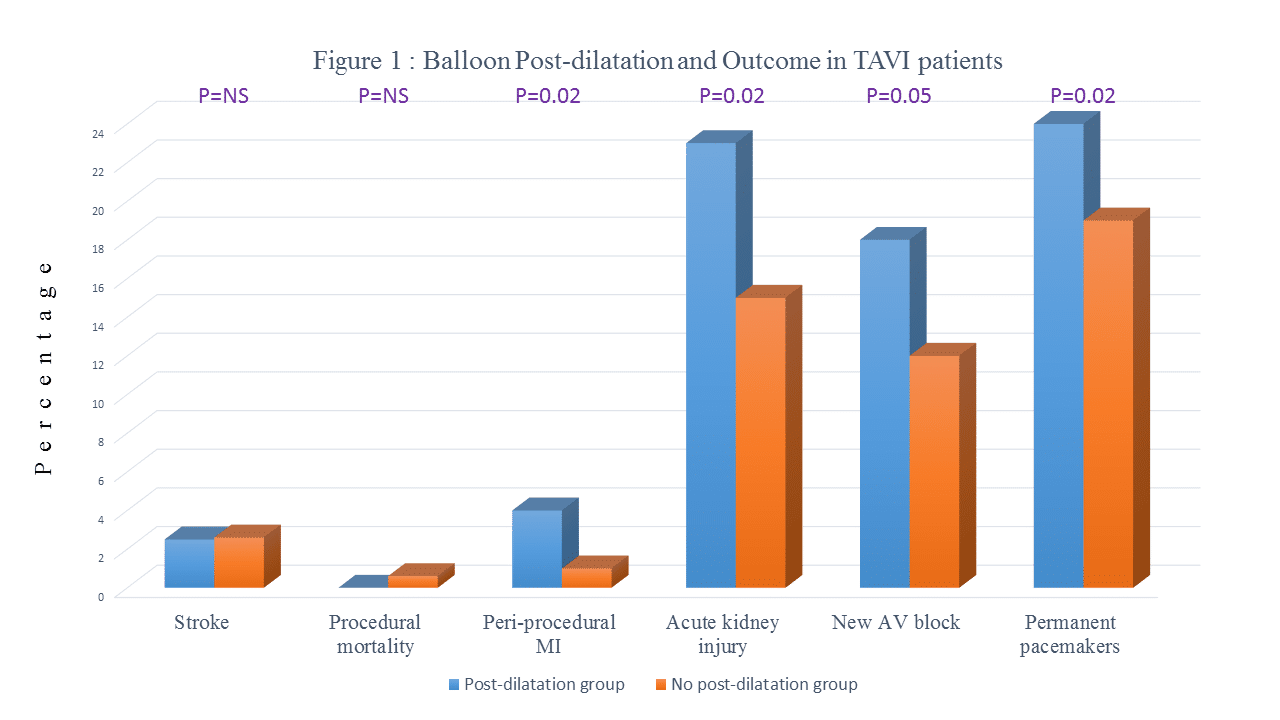
Balloon Post-dilatation and Outcome among Patients Undergoing Trans Aortic Valve Implantation
2Department of Cardiology, Tel Aviv Medical Center, Tel Aviv
3Department of Cardiology, Rabin Medical Center, Petah Tikva
Background: Balloon dilatation after trans-aortic valve implantation (TAVI) is occasionally performed during the final phase of the procedure mainly to treat para-valvular leak. The effect of balloon post-dilation on complication rates after TAVI is unknown.
Methods: We conducted a retrospective analysis of 1,164 consecutive TAVI patients in the Israeli multi-center TAVI registry (Tel-Aviv, Rabin and Sheba Medical Centers) between the years 2008-2014. Patients on whom balloon post-dilation was done at the time of the procedure (n=126) were compared to those that did not undergo balloon post-dilatation (n=1,038).
Results: Baseline characteristics between groups were similar except for a higher percentage of males (65% vs. 40%, p<0.001), less diabetes mellitus (24% vs. 37%, p=0.003) and less hypertension (82% vs. 88%, p=0.02) in the post-dilatation group. Patients that had balloon post-dilatation during their procedure had lower ejection fractions (51.3% vs. 55.8%, p=0.01), higher aortic peak (82.4 vs. 75.6mmHg, p=0.015) and mean gradients (52.3 vs. 47.1mmHg, p=0.006) compared to patients that had TAVI without post-dilatation. Stroke rates were comparable in both groups (2.5% vs. 2.6%, p=0.9), but balloon post-dilatation was associated with more peri-procedural MI, more acute kidney injury (without an increase in the extent of use of hemodialysis) and a higher need for implantation of permanent pacemakers (figure 1). Moderate-severe para-valvular leak was more prevalent in the post-dilatation group (11% vs. 0.6%, p<0.001), but that was related to selection bias. After adjusting for patient risk factors balloon post-dilatation was only significantly associated with acute kidney injury (RR=2.3, 95% CI 1.25-4.3, p=0.007).
Conclusions: Balloon post-dilatation after TAVI is associated with a higher rate of acute kidney injury, but without an increase in the rate of stroke. The effect of balloon post-dilatation on para valvular leak awaits dedicated randomized trials on this issue.

Powered by Eventact EMS